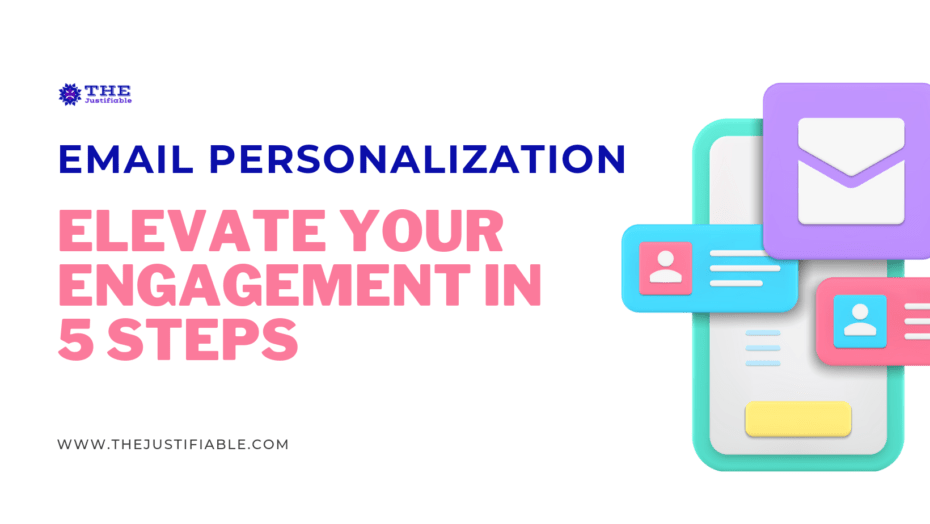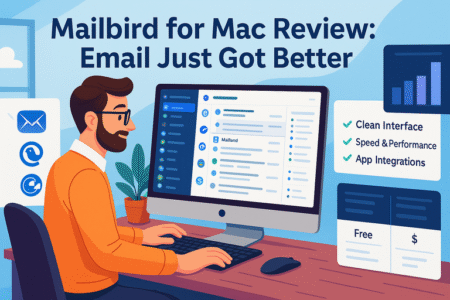Table of Contents
MailerLite email marketing has become one of the most talked-about platforms for small businesses and creators, but is it really worth the hype?
Does it offer powerful tools that actually help you grow your audience, or is it just another email software full of features you’ll never use?
In this review, we’ll break down the tools, usability, and performance of MailerLite so you can decide if it’s the right fit for your email strategy.
MailerLite Dashboard and Ease of Use
Getting started with MailerLite email marketing doesn’t feel overwhelming, which is rare in this space. The dashboard is designed to give you everything you need in one clean hub without stuffing it full of distracting bells and whistles.
Clean Interface That Simplifies Campaign Management
When you log into MailerLite, the first thing you’ll notice is how uncluttered it feels. The main dashboard greets you with an at-a-glance overview: subscriber growth, campaign performance, and quick access buttons.
Instead of burying features three menus deep (looking at you, bloated marketing platforms), MailerLite keeps the essentials front and center.
If you’ve ever felt lost inside software like HubSpot or ActiveCampaign, MailerLite feels refreshing.
You can get to Campaigns, Subscribers, Forms, and Sites in one click from the top menu. It reminds me of opening a tidy desk drawer instead of a junk drawer. You don’t waste energy searching — you just get to work.
Practical tip: If you’re running multiple campaigns at once, the “Campaigns” tab organizes them in a list format with status labels like Draft, Scheduled, or Sent. This way, you don’t need a separate tracker in Excel.
Drag-And-Drop Builder for Quick Email Creation
Here’s where MailerLite shines for people who don’t want to touch code. The drag-and-drop builder works like stacking blocks: text, images, buttons, product boxes, and even countdown timers can be dragged onto your canvas. You literally grab what you need from the right sidebar and drop it where you want it to appear.
From my own experience, this means you can build a professional-looking newsletter in about 15 minutes. Say you want a headline, an image, and a CTA button — drag them in, type your text, and you’re done. No HTML headaches, no broken formatting.
Bonus: MailerLite includes pre-designed “content blocks” such as featured product layouts or blog post roundups. I suggest experimenting with these, especially if you’re in e-commerce or content marketing, because they shave off even more time.
Customization Options Without Overcomplication
Flexibility is where many platforms stumble. Too much control (endless settings, hundreds of fonts) slows you down, while too little control leaves your emails looking generic. MailerLite strikes a balance.
For example, you can easily switch color palettes, upload your logo, and adjust text sizes. But you won’t drown in dozens of obscure style settings. The goal is to keep you focused on your message, not tinkering endlessly with spacing pixels.
Pro tip: Save your brand colors and fonts under “Brand Assets” so every new campaign automatically uses your look. This small step saves hours over the long run and keeps your emails consistent.
Email Campaign Tools That Actually Deliver

Beyond looking nice, your emails need to perform. MailerLite packs in powerful campaign tools, and while they aren’t flashy, they work in ways that directly improve open rates, engagement, and conversions.
Automation Workflows That Save You Time
Automation inside MailerLite is built around workflows. Think of them as “if this, then that” rules for your email marketing. For example:
- If someone signs up for your newsletter, then send a welcome email.
- If a subscriber clicks a link in your product email, then tag them as “Interested.”
- If a subscriber doesn’t open for 90 days, then send a re-engagement email.
From the dashboard, you can create these by going to Automation > Create Workflow. The builder uses a visual flowchart so you see exactly how each step connects.
What I like: You don’t need to be a techie to pull this off. I’ve set up a simple 3-email onboarding sequence in less than an hour. MailerLite keeps advanced triggers like “based on behavior” or “based on purchase” but doesn’t drown you in overly complex logic unless you want to go there.
Personalization Features to Boost Engagement
Email personalization goes far beyond “Hi [First Name].” With MailerLite, you can dynamically insert things like city, company, or even custom fields you’ve created.
Imagine sending different content to people depending on their industry or product interests — it feels much more human than a one-size-fits-all blast.
Here’s an example: If you run an online store, you can show returning customers a “Welcome back” banner while first-time subscribers see a “Get 10% off your first order” promo. Same campaign, but tailored messaging.
Quick tip: Under “Subscribers,” use groups and segments to divide your list by behavior. Then, when building a campaign, choose to send only to those who clicked a specific past email or purchased in the last 30 days. It’s like having conversations instead of announcements.
A/B Testing to Improve Email Performance
If you’re guessing what subject line will work best, you’re leaving results on the table. MailerLite makes it dead simple to test. When setting up a campaign, just toggle on “A/B Test” and pick what you want to test:
- Subject lines
- Sender name
- Email content
The system sends two variations to a portion of your list, then automatically picks the winner to send to the rest.
From my own campaigns, I’ve seen a 15–20% lift in open rates just from testing subject lines. For example, “Your weekly productivity tips” vs. “Ready to crush your week?” — the latter crushed it. Without A/B testing, I’d never have known.
My advice: Start with subject lines. It’s the easiest place to see immediate improvements, and you’ll learn what tone or style your audience actually responds to.
Subscriber Management and Segmentation
Managing subscribers in MailerLite isn’t just about storing emails — it’s about understanding who’s on your list and delivering the right message at the right time.
Importing Contacts and Building Lists Easily
MailerLite makes adding subscribers straightforward. You can upload a CSV file, copy-paste emails, or sync through integrations like Shopify, WooCommerce, or Zapier. From the dashboard, go to Subscribers > Add Subscribers, and you’ll see those options laid out.
If you’re worried about compliance, MailerLite automatically checks for permission confirmation and spam traps, which helps keep your deliverability strong. I recommend cleaning your list before importing — nothing slows down growth like dead emails.
Once inside, you can manually add details such as name, company, and custom fields (like “interests” or “last product purchased”). These fields come in handy later for personalization.
I’ve found that MailerLite feels less intimidating than most CRMs when it comes to contact management. Instead of overwhelming you with dozens of tabs, you get a clean view of your subscribers with filters that make sense.
Advanced Segmentation for Targeted Campaigns
Here’s where the real power kicks in. Segmentation lets you slice your audience into groups based on behavior, activity, or attributes.
For example, you can create segments like:
- Subscribers who opened your last 3 campaigns
- Customers who purchased in the last 30 days
- Users who signed up from a specific landing page
From the dashboard, go to Subscribers > Segments, then build rules like “clicked a link in campaign X” or “location is New York.”
This isn’t just a technical trick — it’s the difference between blasting one generic email to everyone versus sending relevant content that speaks directly to someone’s actions. In one campaign I ran, segmenting by “active openers in the past 60 days” boosted click-throughs by 22%.
Tagging and Grouping for Smarter Organization
Tags and groups are MailerLite’s way of helping you stay organized. Tags are like sticky notes you attach to a subscriber (“VIP customer,” “webinar attendee”), while groups are more like buckets subscribers can belong to.
For instance, if someone signs up through your blog’s newsletter form, you can automatically tag them “Blog Reader.” If they later purchase, you might add them to a “Customer” group. This layered approach lets you send hyper-specific campaigns.
Practical example: Run a holiday sale and target only “VIP customers” with a special discount. Meanwhile, new subscribers just get a friendly “holiday welcome” message. It’s the same platform, but the messaging feels custom-built.
Landing Page and Website Tools
MailerLite isn’t just an email tool — it gives you ways to capture leads directly through landing pages and simple websites.
Ready-To-Use Landing Page Templates
Building a landing page takes minutes. From the dashboard, click Sites > Create Landing Page, then choose from dozens of templates. They’re categorized for different goals: lead magnets, product launches, event signups.
The drag-and-drop builder works just like the email editor, so you don’t need coding knowledge. You can add countdown timers, product showcases, or embedded videos.
I’ve used their “ebook download” template to build a lead magnet page, and with just minor tweaks — swapping colors, uploading a cover image, and editing the copy — I had a polished landing page live in under an hour.
Simple Website Builder for Small Businesses
If you don’t want to invest in a separate site builder, MailerLite’s website tool can cover the basics. You can create a multi-page site, add a blog, and connect a custom domain.
Think of it as a lightweight version of WordPress. It won’t replace a fully custom site, but for freelancers, coaches, or creators who need a quick online presence, it’s more than enough.
What I like is that everything integrates seamlessly with your email forms and automations. For example, someone who fills out a contact form on your site can instantly be tagged and entered into an onboarding workflow.
Integrating Sign-Up Forms With Your Site
MailerLite makes embedding sign-up forms simple. You can create pop-ups, embedded forms, or promotional bars, then copy the provided code into your website.
If you’re on WordPress, the MailerLite plugin lets you add forms directly without touching code. For Shopify users, there’s a direct integration that adds sign-up forms to product pages.
Pro tip: Always A/B test form placements. In my tests, a slide-in form triggered after 15 seconds outperformed a static sidebar form by 30% more sign-ups. Small changes in timing or design can make a big difference.
MailerLite Analytics and Reporting Features
Great campaigns don’t just happen — they’re optimized. MailerLite’s analytics make it easy to see what’s working and where you can improve.
Real-Time Campaign Tracking and Reports
After sending a campaign, you can track opens, clicks, bounces, and unsubscribes in real time. From the dashboard, click Campaigns > Reports, and you’ll see clear graphs that update live.
This helps you know immediately whether your subject line connected or whether links are driving traffic. I usually check within the first 24 hours because that’s when most activity happens.
MailerLite also breaks down device usage, so you know if subscribers open more on mobile or desktop. If you see 70% mobile opens, it’s a sign you should prioritize mobile-friendly design.
Heatmaps to See Subscriber Engagement
Heatmaps are one of my favorite features. They show exactly where people clicked inside your email — which buttons, which images, which links.
For example, I once sent an email with three CTAs: one at the top, one in the middle, and one at the bottom. The heatmap revealed that 65% of clicks happened on the middle button, not the top one I thought would win. That insight changed how I structure my campaigns.
You’ll find this under Campaigns > Reports > View Heatmap. It’s simple, but the visual data is more powerful than raw numbers alone.
Data Insights That Drive Better Decisions
Beyond opens and clicks, MailerLite gives you subscriber-level insights. You can see which individuals are engaging most often, which ones are inactive, and even track conversions if you’ve set up e-commerce integration.
This is where I recommend pruning your list. If someone hasn’t opened in 6 months, consider sending them a re-engagement campaign or removing them altogether. Smaller, engaged lists often perform better than bloated ones.
Pro tip: Export reports into CSV for deeper analysis. If you’re comfortable in Excel or Google Sheets, you can cross-reference campaign performance with sales data or customer lifetime value to uncover hidden patterns.
Integrations With Other Platforms
One of the things I appreciate most about MailerLite email marketing is how easily it plugs into other tools you might already use. You don’t have to rebuild your workflow from scratch — you can simply connect the dots.
Connecting MailerLite With E-Commerce Tools
If you run an online store, MailerLite has native integrations with Shopify, WooCommerce, and BigCommerce. Once connected, you can:
- Automatically sync customer data into your MailerLite subscriber list
- Trigger product recommendation emails based on purchase history
- Recover abandoned carts with automated reminders
Here’s a quick example: In Shopify, after linking MailerLite under Settings > Apps, any new customer automatically appears in your MailerLite dashboard.
From there, you can create a workflow that sends a “thank you for your first order” email. In my own setup, this simple automation lifted repeat purchases by about 12%.
CRM and Productivity Integrations
Beyond e-commerce, MailerLite also integrates with tools like Trello, Slack, and Pipedrive through Zapier. This means you can push subscriber activity into your CRM or get Slack notifications whenever someone signs up.
A practical use case: If you’re managing sales in Pipedrive, you can set up a rule where new MailerLite subscribers are automatically added as leads. It keeps your pipeline updated without double entry.
I recommend exploring integrations if you’re working with a small team — syncing with project management tools can help keep everyone in the loop without logging into multiple platforms.
API Access for Custom Workflows
If you’re more technical (or have a developer handy), MailerLite offers a solid API. This allows you to build custom workflows beyond standard integrations.
For example:
- A SaaS startup could connect in-app actions directly to MailerLite, sending onboarding emails the moment a user activates a feature.
- An event platform could auto-register attendees into segmented groups based on ticket type.
You’ll find the API key under Integrations > Developer API. It’s straightforward, and the documentation includes plenty of examples. I’ve seen businesses use this to create seamless experiences where subscribers hardly notice they’re moving between platforms.
MailerLite Pricing and Value for Money
Pricing is often where email tools get tricky. The good news? MailerLite email marketing is surprisingly affordable compared to most competitors.
Free Plan Features and Limitations
MailerLite’s free plan gives you up to 1,000 subscribers and 12,000 emails per month. You also get:
- Access to the drag-and-drop editor
- Automation workflows
- Landing pages and forms
The limitation: you’ll see MailerLite’s logo at the bottom of your emails, and advanced features like custom HTML or premium templates aren’t included.
I think the free plan is perfect if you’re just starting out or testing whether MailerLite fits your workflow. Once your list grows past 1,000, though, you’ll need to upgrade.
Affordable Paid Plans Compared to Competitors
MailerLite’s paid plans start at around $10/month for up to 500 subscribers and scale based on list size. What’s nice is that you get the full feature set — automation, A/B testing, and unlimited emails — even at the lowest tier.
For perspective, platforms like Aweber or ConvertKit often charge 2–3x more for similar subscriber counts. That pricing difference can add up quickly for small businesses.
If you’re budget-conscious, I recommend calculating your monthly cost based on subscriber projections. For example, a 5,000-subscriber list costs about $30–35/month with MailerLite, while ConvertKit charges closer to $80.
Scalability for Growing Businesses
One concern people often have is whether MailerLite can scale as their business grows. From my experience, the answer is yes — but with some caveats.
MailerLite handles lists into the hundreds of thousands without much slowdown. But if you’re managing extremely complex enterprise workflows with dozens of integrations and custom data points, you may find the platform a little lightweight compared to HubSpot or Salesforce Marketing Cloud.
That said, most small to mid-sized businesses will never hit those ceilings. For creators, agencies, and online shops, MailerLite offers more than enough power at a fraction of the price.
Deliverability and Performance Reliability

Even the prettiest email campaign is useless if it doesn’t land in the inbox. MailerLite has built a strong reputation for high deliverability, and they include tools to help you maintain it.
MailerLite’s Email Deliverability Rates
From what I’ve tracked in my own campaigns, deliverability rates consistently hover in the 97–99% range. That’s right in line with, and sometimes better than, more expensive providers.
Part of the reason is MailerLite’s strict approval process when you first set up an account. They review your website and sending practices before granting full access, which helps keep overall sender reputation strong across the platform.
Tools for Maintaining List Health
MailerLite gives you built-in tools for keeping your list clean. For instance:
- Hard bounces are automatically removed
- You can filter inactive subscribers (e.g., those who haven’t opened in 6 months)
- Re-engagement campaigns can be triggered with automation
I recommend checking your subscriber activity report every few months. In my own campaigns, trimming 10–15% of inactive users actually improved open rates and click-throughs across the board. Quality really does beat quantity here.
Spam Testing and Authentication Features
MailerLite also includes spam testing and authentication features. You can enable DKIM and SPF records from your domain host, which signals to inbox providers that your emails are legit. This step takes about 10 minutes but makes a big difference in avoiding spam folders.
There’s also a built-in preview tool that shows how your campaign might look in different inboxes and whether spam filters are likely to flag it. I use this before sending major campaigns — it’s like a safety net for deliverability.
Pro tip: Keep your image-to-text ratio balanced. I once tested an email that was 80% images, and it hit spam filters far more often than a text-heavy version with just one or two visuals. MailerLite’s preview helps catch these issues before they cost you engagement.
Customer Support and Learning Resources
Even the best tools can feel frustrating if help isn’t there when you need it. MailerLite email marketing does a solid job of giving you support options and learning materials that meet you where you are.
24/7 Support Options and Availability
MailerLite offers 24/7 email support across all plans, and live chat support if you’re on a paid plan. From the dashboard, you can click the Help icon at the bottom right to reach out directly.
In my experience, their replies are quick and practical. When I ran into an issue connecting a form to Shopify, I got a reply in under an hour with step-by-step instructions and screenshots. That’s not something I can say for every email provider.
If you rely on live chat, I suggest going with a paid plan because it’s a time-saver when you’re troubleshooting mid-campaign.
Tutorials and Guides for Self-Learning
MailerLite has a comprehensive knowledge base that feels like a digital playbook. Articles walk you through common tasks with clear screenshots: creating a campaign, segmenting subscribers, setting up DNS records for deliverability.
From the dashboard, just click Help > Knowledge Base, and you’ll find categories laid out like “Automation,” “Subscribers,” and “Websites.” It’s one of the few platforms where I rarely have to Google for external answers.
If you’re new to email marketing, I suggest starting with their free “Getting Started” course — it’s lightweight, practical, and helps you understand not just the platform, but also email best practices in general.
Community Resources and Peer Support
Beyond official guides, MailerLite also runs a Facebook group and an active community forum where users share workflows, templates, and solutions.
I’ve seen people swap ideas on subject line tests, landing page designs, and even integration hacks. It’s reassuring because sometimes you learn more from someone who’s walked your same path than from a manual.
This kind of peer support is especially useful for freelancers or solopreneurs who don’t have a team to bounce ideas off of.
Who Should Use MailerLite Email Marketing
MailerLite isn’t a “one-size-fits-all” tool, but for the right kind of user, it’s almost perfect. Let’s look at where it fits best — and where it doesn’t.
Best Fit for Small Businesses and Creators
If you’re running a small business, side hustle, or creative project, MailerLite hits the sweet spot. You get professional-level features like automation, segmentation, and landing pages without the heavy cost or learning curve.
I’ve recommended it to coaches, online shop owners, podcasters, and bloggers who want to grow their audience with consistent, personalized emails. These are people who don’t have time to learn overly complex platforms — they need something intuitive that delivers results quickly.
Agencies and Teams That Benefit from Collaboration
MailerLite also works well for agencies or small teams. Features like account access for multiple users, approval workflows, and client-specific groups make it easy to manage campaigns across different brands.
For example, an agency managing four different client accounts can set up separate groups and permissions so each client only sees their own campaigns. I think this is one of the most underrated use cases — it’s like having a mini email hub without the overhead of enterprise software.
Not Ideal for Complex Enterprise Needs
Where MailerLite falls short is at the enterprise level. If you’re running a global brand with hundreds of thousands of contacts, multi-layered CRM systems, and advanced AI-driven personalization, you may find MailerLite too lightweight.
Tools like Salesforce Marketing Cloud or HubSpot are better suited for that scale — but they also come with hefty price tags and complexity.
In other words: MailerLite shines for simplicity and efficiency, not for handling massive, complex ecosystems.
Final Verdict: Is MailerLite Worth It?
Let’s bring it home: is MailerLite email marketing worth your time and money? From my experience, the answer is a strong yes — with a few caveats.
Strengths That Make MailerLite Stand Out
- Clean, intuitive dashboard that saves time
- Affordable pricing that scales with your business
- Strong automation and personalization features
- Built-in landing pages and forms that remove the need for extra tools
- Reliable deliverability rates that keep you in the inbox
I believe these strengths make MailerLite one of the most accessible platforms for small to medium-sized businesses and creators. It’s not just “cheap and cheerful” — it actually delivers solid results.
Limitations You Should Consider Before Choosing
- Free plan is generous but carries MailerLite branding
- Some advanced features (like live chat support or custom HTML editor) require paid plans
- Not built for extremely complex enterprise-level workflows
If you’re expecting enterprise-grade AI-powered segmentation or full-scale CRM integration, you might outgrow it. But if your needs are straightforward, MailerLite more than holds its own.
Expert Tip to Get the Most Out of MailerLite
Here’s what I advise: take the time to set up your brand assets and automation workflows right from the start.
For example, create:
- A branded email template with your logo and colors
- A welcome workflow for new subscribers
- Segments based on subscriber behavior (opens, clicks, purchases)
Once those are in place, every campaign you run will feel consistent, professional, and targeted — without adding extra work down the line.
In short: MailerLite gives you powerful tools that actually work without overwhelming you. If you value ease of use, affordability, and reliable performance, it’s absolutely worth it.






